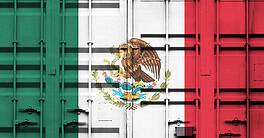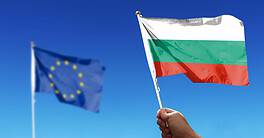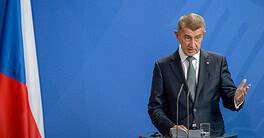Argentina
Santiago Bausili: Too Early To Say
With the new government led by President Javier Milei, who assumed office near the end of 2023, the Argentine central bank may have changed. It is slowly moving from a little-used institution unable to set credit conditions for the country, toward becoming a modern central bank.
Much more is needed: The Central Bank of the Republic of Argentina (BCRA) still lacks independence from the government, and the ongoing economic and financial changes are part of a radical deregulation and modernization agenda that will take time to implement. In the meantime, the country risks remaining short of foreign reserves, and new waves of aid from the International Monetary Fund (IMF) may be called upon.
Santiago Bausili’s appointment in December 2023 as the head of the BCRA is too recent to warrant a rating. Still, policy watchers are optimistic about his moves.
Ash Khayami, senior Latin America risk analyst on the BMI Americas Country Risk team at Fitch Solutions,says, “It’s important to highlight that the BCRA is not an independent entity, like most other central banks in the region. Given all these caveats, we do believe that under his direction the BCRA has made some progress in alleviating some economic distortions.”
Bahamas
John Rolle: B
The Bahamas economy enjoyed a strong post-pandemic expansion, mostly linked to a rebound in tourism. Still, the rate of GDP expansion is petering out, from 17% in 2021 to 14.4% in 2022 and 4.3% in 2023, as the economy is facing its natural constraints.
“Unemployment is at its lowest level since 2008, while inflation has been on a downward path and is lower than in regional peers,” says the IMF in its February report. Public finances are improving, although debt remains high. The country needs structural reforms to improve the potential growth rate and improve climate resilience and social equity.
The GDP is expected to expand by 2.3% in 2024, and inflation this year to be at 2%. The Bahamian dollar remains pegged 1:1 to the US dollar, so the actual room for the Central Bank of the Bahamas is limited, and the discount rate is kept steady at 4%.
Foreign reserves improved slightly from 2023, to $2.8 billion at the end of April, from $2.7 billion in the same month last year.
The central bank has been involved in reforming the public debt market. Recent amendments to the Central Bank Act prohibit the central bank from financing the government via the primary bond market, imposing a limit of 15.5% of the government’s ordinary revenues. “This limit on central bank financing is well above that of regional peers with pegged regimes,” says the IMF, suggesting a reduction of this threshold.
Bolivia
Roger Edwin Rojas Ulo: C–
According to IMF estimates, the Bolivian economy grew at 2.5% in 2023 but is expected to slow down to 1.6% in 2024. The Central Bank of Bolivia (BCB) maintains the currency (the boliviano) pegged to the US dollar, helping to keep inflation in check. However, the political situation remains very fragile, and how long the peg to the dollar can be maintained is unclear.
Last February, Fitch downgraded Bolivia’s long-term foreign currency issuer default rating (IDR) to CCC from B-. Fitch notes, “The downgrade reflects a significant decline in usable international reserves to very low levels, heightening risks to macroeconomic stability and debt service capacity. Wide fiscal deficits, largely financed by borrowing from the central bank, and the absence of a concrete consolidation plan are likely to continue to put pressure on reserves. This has resulted in foreign exchange rationing and the emergence of parallel-market exchange rates in the context of a stabilized currency regime.”
With elections scheduled for August 2025 and a deeply divided political scenario, neither the government nor the central bank will likely be able to significantly adjust to the fiscal and monetary situation in the short run.
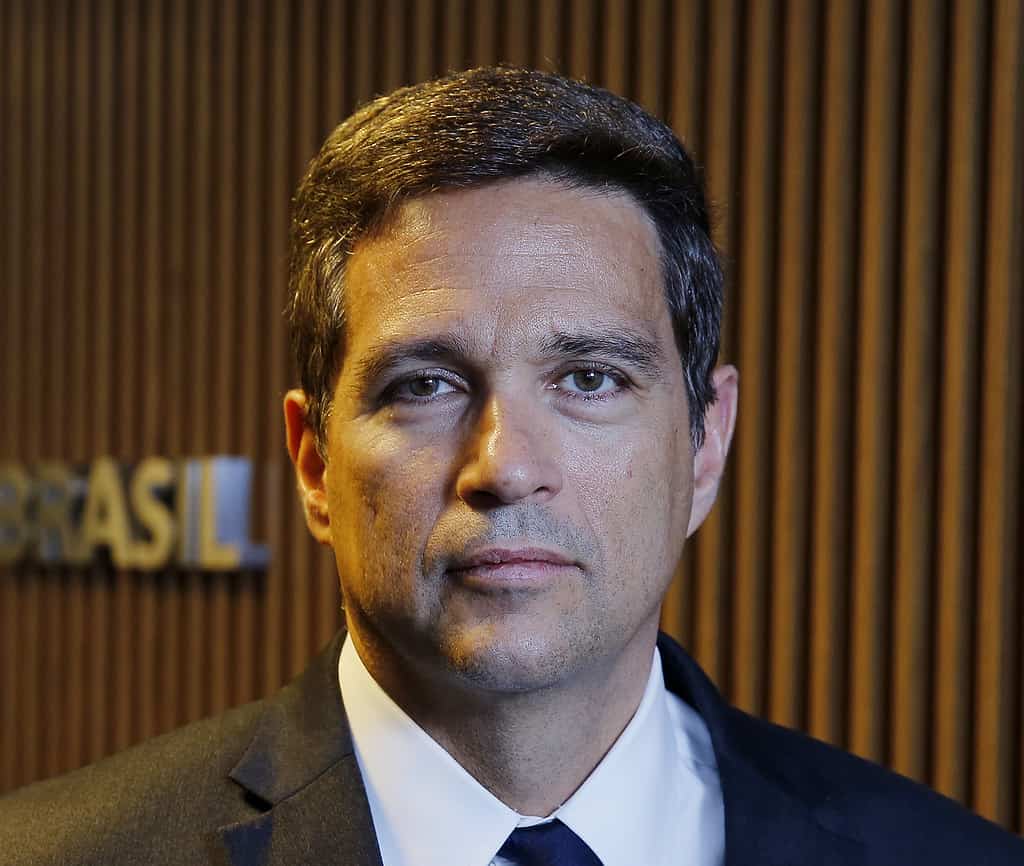
Brazil
Roberto Campos Neto: A
The Central Bank of Brazil (CBC) raised interest rates by 25 basis points to 10.75% on Sept. 18, citing a stronger-than-expected economy and concerns that inflation will remain stubborn. In June, the CBC had paused its easing cycle, following seven consecutive reductions over the past year that lowered the country’s benchmark Selic interest rate to 10.5%. The June decision to hold off on future cuts was based on worse-than-expected inflation data, greater uncertainty about the economy, and a weakening of the Brazilian real.
Since his appointment was approved by the Senate in February 2019, Campos Neto has gained considerable credibility for the professional way he conducted monetary policy. However, President Luiz Inácio Lula da Silva has voiced sharp criticism, requesting a more accommodative monetary policy supporting economic expansion. Campos Neto’s mandate ends in December, and the markets’ attention is on who will replace him.
“It has been a very challenging time to be a Brazilian central bank governor,” says William Jackson, chief emerging markets economist at Capital Economics. “They had challenges by the government, which had been loosening fiscal rules, and the president harassing the central bank for keeping interest rates high.”
“The politicization of the central bank has been a big concern amongst investors for next year when [Campos] Neto will be gone,” says Jackson.
Four of the nine central bank board members have been appointed by the current government and five by the previous government. In August, Brazil’s President Luiz Inacio Lula da Silva picked central bank monetary policy director Gabriel Galipolo to replace Campos Neto when his term ends in December.
According to Jackson, it is still likely that the Brazilian central bank will maintain some form of independence from the government.

Canada
Tiff Macklem: A–
The Bank of Canada has had a convincing monetary policy in the past 12 months. Analysts who applauded its action in the previous rate-raising cycle expected a new cycle of cuts given the economy’s weakness.
In September, the bank lowered its key interest rate 25-basis points to 4.25%, its third consecutive 25-bps cut since June.
At the beginning of July, “suddenly there was a different economic backdrop to deal with. The key thing really is that we’ve seen a much larger rise in the unemployment rate. And the GDP growth has been weaker,” said Stephen Brown, deputy chief North America economist at Capital Economics.
According to analysts, the issue now is whether they will continue cutting interest rates, and how fast. “We think that given how quickly inflation is coming back to target, we should be seeing a rate cut at every meeting, but it could also be at every other meeting—a pace that risks being too slow,” says Brown. He adds that the bank has been acting on its forecasts more than on data, anticipating the trend.
“In comparison to the Fed [US Federal Reserve Bank] and other central banks, I would say that the Bank of Canada still compares quite favorably now,” says Brown.
Chile
Rosanna Costa: A
After pushing interest rates to a high of 11.25% in October 2022, the Central Bank of Chile (BCC) began an aggressive series of interest rate cuts in July 2023, as inflation continued falling throughout the year. Policymakers led by Rosanna Costa slashed the country’s key interest rate by more than half, bringing it down to 5.5% after September’s 25 basis-point cut.
But with growth rebounding in Chile this year and headline inflation remaining above the 3% target for several months, Costa may need to reconsider additional rate cuts.
Analysts, though, say Costa’s actions and conduct of monetary policy have been the best possible, building on the country’s ample credibility and the solid traditions of Chilean central bankers.
“I have been positively impressed throughout the monetary cycle,” says Capital Economics’ Jackson. “They increased the interest rates aggressively when inflation was high, and the central bank has also been very aggressive in their interest rate cuts; but I think that what has been even more important is that they have been very clear in their signaling and communication.”
Colombia
Leonardo Villar Gómez: B
The Colombian central bank (Bank of the Republic, or BanRep) started a little late to the region’s current easing cycle, beginning a series of cuts in December and maintaining a relatively steady policy of easing since, and in July cut rates again by 50-basis points to 10.75%.
“Colombia’s inflation dynamic has been following a slightly different pattern than the rest of Latin America,” says Jackson, and because of this the central bank has been slower than other peers in the region.
The good news is that inflation should trend lower in the future, which should mean that BanRep will continue its easing cycle. However, most analysts still expect an excess of caution. Some applaud this attitude, but others say that the central bank in Colombia should be able to communicate its moves better.
“BanRep was one of the last markets in the Americas to engage in its rate-cutting cycle and has been one of the most cautious in loosening policy. While inflation has started to exhibit more stickiness in Q2 2024, we believe that Leonardo Villar will continue to advocate for continued caution in order to ensure price and currency stability,” says BMI’s Khayami. “Leonardo Villar’s leadership through one of the largest spikes in inflation—not just in Colombia’s recent history, but in the region more broadly—has been instrumental.”
Costa Rica
Róger Madrigal López: A–
The Central Bank of Costa Rica (BCCR) has been aggressively reducing its key monetary rate from a top level of 9% reached in October 2022. In April 2024, the rate was cut to 4.75%, with a cumulative rate cut of 425 bps through nine successive reductions that began in March 2023. Since April, BCCR has been on hold because of a modest pickup in inflation.
The IMF projects that GDP will grow 4 % in 2024, down from 5.1% in 2023; while inflation will be 0.3% in 2024, slightly down from 0.5% in 2023 and well below the central bank’s 2% to 4% target range.
“The central bank has appropriately lowered the policy rate, and its data-dependent, forward-looking approach should continue to help inflation rise back to target. It is critical to institutionalize the central bank’s autonomy as well as clarify its mandate and decision-making processes through comprehensive legal reforms as soon as circumstances are propitious,” said the IMF in its June executive board review.
“Risks to the inflationary outlook are skewed to the downside; the BCCR expects headline inflation to stay below the lower bound of its 2.0–4.0% target range this year. Hence, the Bank deemed a rate cut necessary to bring inflation within target,” said FocusEconomics in a July report, concluding that “our panelists expect the Bank to continue with its easing cycle by year-end.”
Dominican Republic
Héctor Valdez Albizu: A–
The Central Bank of the Dominican Republic (BCRD) led by Héctor Valdez Albizu, its longtime governor, was one of the first in the region to start the cycle of monetary easing; it has been closely following the evolution of other countries, particularly the US.
Last year, as the country’s inflation rate had been falling for some time, the central bank reduced its key interest rate in a series of five stages, from a peak of 8.5% in May to 7% in November of 2023. Since then, the monetary policy rate remained unchanged until a further 25 bps cut in August.
The rate cut reflected a loosening of global financial policy and strong domestic economic performance. FocusEconomics, a global provider of macroeconomic intelligence, said in its report on the August cut, “In addition, the BCRD noted that inflation has remained at the lower end of the target range of 3.0%-5.0% so far this year.”
Capital Economics forecasts that the Dominican Republic’s GDP will expand at 4% in 2024, up from 2.3% in 2023, with an inflation rate of 3.3% from 4.8% the year before. The consultancy says that government action is supporting sustained growth.
“The outlook for the Dominican Republic’s economy is bright as President [Luis] Abinader’s pro-business policies, a strong tourism sector and robust consumer spending continue to drive strong growth in the coming years,” wrote Capital Economics in a note.
Eastern Caribbean Central Bank
Timothy Antoine: B+
The Eastern Caribbean Central Bank (ECCB) is the monetary authority for eight island economies: Anguilla, Antigua and Barbuda, Dominica, Grenada, Montserrat, Saint Kitts and Nevis, Saint Lucia, and Saint Vincent and the Grenadines. The Eastern Caribbean dollar is pegged to the US dollar.
The economy of the islands continued a strong recovery after the pandemic. According to the ECCB, “The recovery is firmly entrenched, with real GDP growth estimated to have averaged 7.3% over 2021 to 2023.” The IMF forecasts 2024 GDP growth at 4.3% and 3.3% in 2025.
In 2023, inflation was at 3.9% in the region after reaching a peak of 5.6% in 2022, according to the IMF. This was mostly due to an increase in commodity prices. Since the currency is pegged to the dollar and US inflation has been under control, inflation in the area is expected to remain low in 2024.
The pilot project on DCash, the digital version of the Eastern Caribbean Dollar, was completed in January 2024. The ECCB has now announced the transition to DCash 2.0. “This version is expected to be a more advanced and user-friendly iteration, enhancing utility for customers, developers, businesses, and financial institutions. DCash 2.0 is anticipated to be launched in the next 18 to 24 months.”
Ecuador
Guillermo Avellán: C+
Ecuador remains mired in a deep political and economic crisis. The economy is wholly dollarized, so the margins for monetary policy are quite restricted. As expected in a dollarized economy, inflation has been low in 2023 and is forecast to remain low: The latest estimate by the IMF is that it will be at 1.4% in 2024, down from 2.2% last year. GDP growth is doing poorly, with essentially zero growth expected in 2024 after the 2.3% reached in 2023.
The criminal gang violence that has characterized the country in the past few years continues, making it difficult to pursue policies leading to stabilization and growth. According to the World Bank, “In recent months, the economy has slowed substantially, owing to an increase in insecurity caused by organized crime, disruptions in oil production, climate-related events, and political uncertainty.”
In Spring 2024, the government reached an agreement with the IMF, giving access to $4 billion to help a stabilization and fiscal consolidation program. The results remain uncertain.
El Salvador
Douglas Pablo Rodríguez Fuentes: C+
Given El Salvador’s fully dollarized economy, the Central Reserve Bank has limited instruments for its monetary policy. The country faces a high level of poverty and a fast-growing public debt that is crowding out private investments, with lower prospects of future economic growth. The IMF has been very critical of introducing bitcoin as an official currency.
Inflation has been slowing down in 2024 toward 0.9% from a peak of 7.2% in 2022, while real GDP growth is estimated at 3% for 2024. The IMF projects growth to decline to 2.3% in 2025, below the historical average, because of high public borrowing costs. President Nayib Bukele started his second term in June, saying he would focus on the economy after having improved the level of security in his first term. More than a quarter of Salvadorians live in poverty. El Salvador’s public debt has skyrocketed on Bukele’s watch, reaching over $30 billion or about 84% of GDP.
El Salvador has been the first country to adopt bitcoin as an official currency—the Chivo Bitcoin Wallet—with some role in promoting financial inclusion. However, the IMF has been highly critical due to bitcoin’s high price volatility. The IMF says that risks to financial stability, added to the risk that crypto assets could open the door to illicit money, largely outweigh the benefits.
Guatemala
Alvaro González Ricci: A–
The Guatemalan economy has shown stability and soundness with few changes since Alvaro Gonzáles Ricci was appointed governor of the central bank (Banguat) in October 2022.
In May 2024, the IMF praised the country’s “remarkable stability and soundness,” attributing the trait to “a legacy of prudent monetary and fiscal policies—with the inflation rate on target, ample international reserves, contained fiscal deficits, and a low public debt/GDP ratio that continues to fall. In line with the country’s goals, the administration needs to advance in the structural reform agenda.”
This year, the GDP is expected to grow 3.5%, in line with 2023, despite high political uncertainty. Inflation fell sharply over 2023 from a peak of almost 10% (9.9%) in February to 3.3% in February 2024. The IMF projects 4% for this year, within the 3% to 5% set by the central bank.
Despite the decline in inflation, Banguat left its policy rate unchanged, with a key monetary rate steady at 5% since May 2023.
“The Bank determined that the currently tight monetary policy backdrop is congruent with inflation remaining within its 3% to 5% target range in 2024-2025. Price pressures rose to 3.8% in May but remained below the midpoint of the Bank’s target range. Moreover, Banguat highlighted that inflation expectations remain within its target band,” writes FocusEconomics in a note.
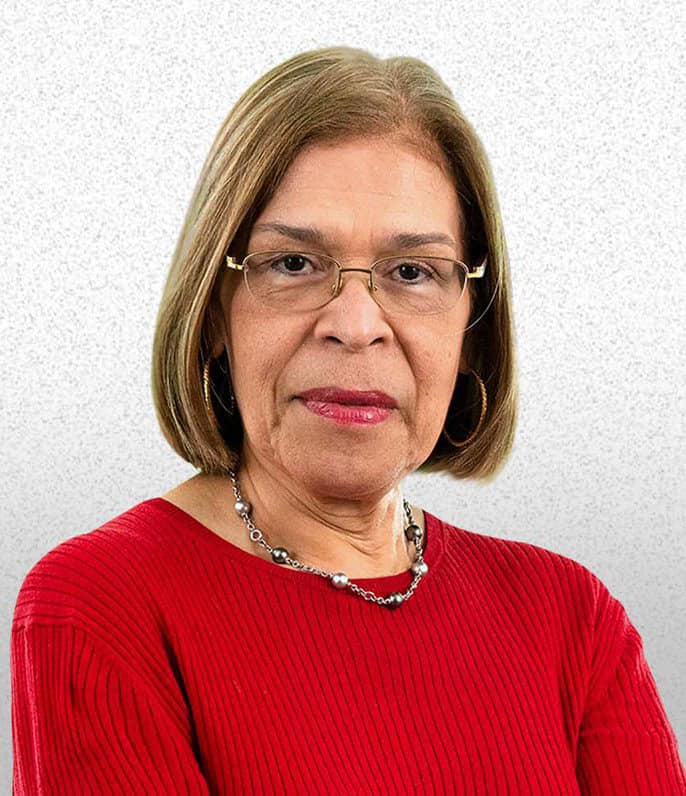
Honduras
Rebeca Santos: B
Honduras maintains a crawling band for its currency, the lempira, with the US dollar. The commitment to the crawling band, which has a margin of 7% in either direction, has been maintained. The crawling band regime reduces the space for active monetary policy.
The country remains poor and has many structural problems, but its GDP growth rate in 2023 was 3.5%. It is expected to perform similarly in 2024, when the forecast is 3.6%.
Honduras was hit by the global wave of inflation after the pandemic, with a peak of 9.1% for 2022. The situation has subsequently improved. Inflation was 6.7% in 2023, and the IMF forecasts it lowering to 4.4% in 2024.
Jamaica
Richard Byles: A–
Jamaica is undergoing a stabilization program to create an environment with stable growth, low inflation, and a stable public budget. Its monetary policy had been particularly tight, but it reversed course in August with its first rate cut since 2019, lowering interest rates from 7% to 6.75%.
Trading Economics’ global macro models and analysts’ expectations see interest rates going down another 25 basis points by the end of this quarter.
That long period of stable rates brought significant progress in reducing inflation, which fell to 5.1% in July 2024, marking the fifth consecutive month within the target range. With inflation expectations stabilizing and wage pressures moderating, the Monetary Policy Committee (MPC) unanimously agreed to gradually ease monetary policy, starting with reducing the absorption by the Bank of Jamaica (BOJ) of liquidity from deposit-taking institutions.
The Jamaican economy grew by 1.4% in Q1 2024, with balanced GDP growth risks. The bank said that future MPC decisions would hinge on sustained inflation control within the target range.
Core inflation remains sticky amid tight labor markets and domestic demand pressures.
In its March country report, the most recent, the IMF states, “Inflation has been low and stable. … Over the last five years (2019-23), inflation was in single digits averaging 7 percent. The credibility of the monetary regime was strengthened by enacting amendments to the BOJ Act in 2020 that enhanced the BOJ’s mandate, autonomy, and governance arrangements. Global shocks have pushed inflation above the target band during August 2021-23.”
The IMF report goes on to say, “The BOJ adopted an appropriate monetary policy, which together with prudent fiscal policy brought inflation close to the upper target band by end-2023.”
Mexico
Victoria Rodríguez Ceja: B+
The Bank of Mexico (Banxico) had kept interest rates the same over a 12-month period before cutting them in March of this year and again in August. This year’s cuts lowered the rate by a total of 50 bps to a current 10.75%.
Analysts say Banxico’s prudent attitude is explained by the greater impact of its close neighbor, the US, in terms of GDP and inflation, adding to a more difficult political situation. Some criticized the bank for its lack of a forward-looking stance.
“Like the Fed, Banxico has taken its time with its cutting cycle,” says Conor Beakey, head of Americas Country Risk at BMI, a Fitch Solutions company. “This decision made sense given the resiliency in domestic demand that prevented inflation from making steady progress toward its target through most of last year.”
“I think they also have a very complex political environment to navigate,” says Capital Economics’ Jackson. “They had their own election in June, and I think they are also looking at the US election in November. They are likely to be affected by the US presidency in terms of trade policy, but also inflation and interest rates.” He adds that Banxico should be more forward-looking instead of reacting to current economic data.
“The minutes from June’s policy meeting suggest that the central bank is aware that underlying price pressures are not quite what they were,” observes Beakey, “but officials have wisely opted against rushing into a major easing cycle against a backdrop of heightened political uncertainty. This prudent approach has helped to mitigate downside risks to the peso in what have been fairly challenging circumstances,” he concludes.
Nicaragua
Leonardo Ovidio Reyes: B
Nicaragua’s economy has maintained relatively good GDP growth and an inflation rate under control. The Central Bank of Nicaragua (BCN) keeps the national currency, the córdoba, at a fixed exchange rate with the US dollar. It was previously held at a narrow crawling peg.
According to the IMF Staff Country Report, “Substantial foreign exchange inflows and prudent macroeconomic policies are fostering reserve accumulation and have allowed to maintain the monetary reference rate unchanged since December 2022, despite the tightening by the Federal Reserve.” The BCN raised its monetary reference rate to 7% in December 2022, doubling it since the start of the tightening cycle in April 2021. Given the fixed exchange rate regime, the BCN’s actions have a limited impact. The economy remains highly dollarized, with emigrant remittances playing an important role. A strong current account surplus has increased international reserves. The government also increased the general government surplus, 2.8% of GDP in 2023.
The prudent macroeconomic policy led to an overall improvement in access to financial markets. In May, Fitch upgraded Nicaragua’s IDR to B from B-. While many vulnerabilities persist, the country’s overall economic and financial situation is improving. According to Fitch’s note, “Inflation has moderated significantly to 5.4% [year over year] as of April, after experiencing the greatest shock in Central America in the past several years. The BCN has kept its monetary policy at 7% since the end of 2022, maintaining a positive differential relative to the US Fed, and as of 2024, has reduced the pace of depreciation under its crawling peg regime to 0%.”
Paraguay
Carlos Carvallo Spalding: Too Early To Say
Paraguay is another Latin American country that surprised the markets by suspending its monetary easing process in April. It left its reference rate unchanged at 6% at August’s meeting. Since the start of the easing cycle more than a year ago, the central bank has lowered borrowing costs by 250 bp.
A mission by the IMF in June concluded that the strong growth in 2023 was led by agricultural production and electricity generation following a severe drought in 2020-2022. The IMF also praised the central bank’s action in maintaining inflation around or below the 4% inflation target.
The appointment of Carlos Carvallo Spalding in August 2023 did not change the ongoing stance of monetary policy. “Paraguay continues to benefit from a robust inflation targeting framework, complemented by a transparent and flexible exchange rate system. They welcomed the data-driven approach to monetary policy, with the central bank continuing to respond to inflation dynamics and inflation expectations as needed,” says the IMF in its June report.
Peru
Julio Velarde Flores: A–
After two consecutive climate shocks and social turmoil at the start of 2023, inflation has receded in Peru, thanks to the bank’s “decisive monetary policy tightening, while the fiscal position and financial system remain strong,” the IMF said in its Article IV consultation report last May.
Julio Velarde Flores, who has been leading the Central Reserve Bank of Peru (BCRP) since 2006, has been steadily driving monetary policy in a tough political situation in which President Dina Boluarte and the government are struggling with a low level of public approval following the violent suppression of protests.
The rate cut trend had been put on a brief hold, similarly to what has happened in other countries in the region. However, at their August and September meetings, policymakers resumed with a 25 bp cut each month, lowering the rate to 5.25%.
“The Banco Central de Reserva del Perú has surprised markets this year with unexpected pauses in March and June, but we think these moves have been prudent due to Peru’s growth rebound (hot April and May economic activity readings) and hotter than expected core inflation readings,” says Julia Sinitsky, analyst on the BMI Americas Country Risk team at Fitch Solutions. “Already, rates in Peru are lower than in neighboring markets, and the BCRP has been conscious of rate differentials in the last few months.”
Suriname
Maurice Roemer: B–
Suriname had a period of economic turmoil, which included default on government debt and the condemnation in 2022 and years of jail for the previous central bank governor for charges including money laundering. While the economy is still fragile, the IMF stated in August that “the authorities’ commitment to maintain prudent macroeconomic policies and difficult reforms is showing results in terms of macroeconomic stability and investor confidence.”
In December 2023, the government emerged from bankruptcy and regained access to the bond market. The structural reforms had some positive results. According to the IMF, “Growth is projected to reach 3 percent this year, inflation is on a steady downward trend, donor support is increasing.” The IMF adds that “international reserves are increasing.”
Regarding monetary policy, the IMF notes that the “implementation of a restrictive monetary policy stance has been instrumental in reducing inflation,” adding that “It is important for the central bank of Suriname (CBvS) to continue monitoring monetary developments and to continue diligently implementing open-market operations to maintain the reserve money path consistent with the program targets. The CBvS remains committed to a flexible, market-determined exchange rate and is working to improve the functioning of the foreign exchange market.”
Trinidad and Tobago
Alvin Hilaire: C
Alvin Hilaire has been reappointed governor for the third time, until 2026. He has been leading the Central Bank of Trinidad and Tobago (CBTT) since 2015 when his mandate was initially five years and was then reduced to a three-year term in 2020.
A heavily managed exchange rate and a small open economy are limiting the role of monetary policy, while the central bank has been trying to reduce bureaucracy for banking accounts and increase financial inclusion.
During the pandemic, the central bank brought the repo rate to 3.5% in March 2020. It has not increased since then, and the rate was confirmed in the June 2024 meeting of the Monetary Policy Committee and has remained there through mid-September. This has created some tension, especially during the period in which interest rates were increasing in the rest of the world, especially in the US.
In its Article IV Consultations in June, the IMF states, “While these differentials have narrowed more recently, they incentivize potential capital outflows. Although capital outflows currently remain contained, the CBTT is encouraged to remain vigilant and stand ready to increase its policy rate if this risk intensifies.”
The good news is that inflation started to decrease, alleviating the pressure on interest rates. “After peaking at 8.7 percent in December 2022, headline inflation has declined to 0.3 percent in January 2024, mainly due to declining food and imported goods inflation,” says the IMF.
Uruguay
Washington Ribeiro: Too Early To Say
Despite a drought of historic proportions, authorities in Uruguay managed to maintain sound macroeconomic policies and a resilient economy. The central bank, led by Diego Labat until his resignation on July 26, was able to start reducing its key interest rates in April 2023 as inflationary pressures declined.
From that point, the Central Bank of Uruguay brought its benchmark policy rate to 8.5% in April of this year, from its peak of 11.5%, with six more consecutive cuts, then put the declining phase on hold since April 2024. Inflation is hovering above 5%, while the central bank has an objective of 4.5%. The IMF has lauded its action, while sovereign debt ratings and sovereign spreads stood at historically low levels.
“In 2023, Uruguay confronted the impact of a once-in-a-century severe drought and external headwinds; but the economy remained resilient, owing to the authorities’ sound macroeconomic policies, the country’s political stability, and strong institutions. Despite the challenging environment, Uruguay maintained favorable market access with improved sovereign debt ratings and sovereign spreads at historically low levels, including the lowest spreads in the region,” according to the IMF’s July report.
In this context, the central bank’s action has been vital to keep inflation under control and help keep long-term borrowing costs lower. “Monetary policy should remain contractionary to ensure that inflation and inflation expectations stay within the target range in a sustained manner. Sustained monetary policy vigilance is crucial for continuing to build credibility and supporting de-dollarization efforts by delivering low and stable inflation rates,” says the IMF.
USA
Jerome Hayden Powell: A–
After being criticized by economists and Wall Street for its slow approach to rising inflation, the Fed roared ahead last year with one of the most aggressive and unequivocal cycles of restrictive monetary policy in its history.
The results did not take long to arrive. Year-over-year inflation fell 12 consecutive months from its 9.1% June 2022 peak to just 3% by June 2023. The rate has bounced up and down a bit since then but settled at 2.5% in August, its lowest in three and a half years.
The Fed has debated in excruciating, and at times confusing, detail throughout this year when and whether to cut its benchmark rate from a 23-year high of 5.5%, a level held since July 2023. This September, the Fed finally turned the monetary ship toward a policy of easing, with a 50-basis point cut, which was at the higher end of forecasts.
Prior to the rate cut, economists agreed that confusion in the markets was a case of bad communication by the Fed, but Powell’s overall handling of policy has been praised.
“It is difficult to find much fault with the Fed’s approach to policymaking over the past year. Powell faced some criticism in the early part of 2024, with some arguing that an overly dovish message at the last [Federal Open Market Committee] meeting of 2023 was to blame for the uptick in price pressure we saw over Q1. However, it was the market that took the Fed ending its hiking cycle as a green light to price in substantial cuts,” says BMI’s Beakey. “The Fed has appropriately changed its tone in response. More-substantial easing in the following months will be crucial to avoid a policy mistake and to secure Powell’s legacy.”
Venezuela
Calixto Ortega Sánchez: F
After the July presidential election, the official electoral authorities declared Nicolás Maduro the winner and gave him a third term in office. Independent observers called the vote undemocratic, and tensions are running high. Several countries and international bodies, including the EU, the US, and several Latin American countries, have refused to recognize the results.
As long as the government remains the same, no changes are expected at the level of the central bank, which remains isolated and lacks independence.
Before the election, Venezuela had experienced some economic improvement after years of financial difficulties. The IMF estimates a growth rate of 4% for 2024, based on improvements in trade and services, driven by the oil and mining sectors and the growth of sectors such as food processing and pharmaceutical production. Inflation has been falling this year, though still extremely high compared to most countries, as rates settled at 35.5% in August, down from 107.4% in January.
Asdrúbal Oliveros, director of Caracas-based firm Ecoanalítica, inflation is likely to stay elevated through this year after the government executed, without announcing it, a severe fiscal and economic adjustment. “The government has more money, it has been increasing its revenues; but public spending is still far below the levels of other years,” says Oliveros.
| The Americas | |||
|---|---|---|---|
| Country | Governor | 2024 Grade | 2023 Grade |
| Argentina | Santiago Bausili | TETS | N/A |
| Bahamas | John Rolle | B | B |
| Bolivia | Roger Edwin Rojas Ulo | C- | C- |
| Brazil | Roberto Campos Neto | A | A |
| Canada | Tiff Macklem | A- | B+ |
| Chile | Rosanna Costa | A | B+ |
| Colombia | Leonardo Villar Gómez | B | A- |
| Costa Rica | Róger Madrigal López | A- | B- |
| Dominican Republic | Héctor Valdez Albizu | A- | A- |
| E. Caribbean Central Bank | Timothy Antoine | B+ | B+ |
| Ecuador | Guillermo Avellán | C+ | C+ |
| El Salvador | Douglas Pablo Rodriguez Fuentes | C+ | B- |
| Guatemala | Alvaro González Ricci | A- | TETS |
| Honduras | Rebeca Santos | B | B |
| Jamaica | Richard Byles | A- | B+ |
| Mexico | Victoria Rodríguez Ceja | B+ | A- |
| Nicaragua | Leonardo Ovidio Reyes | B | B- |
| Paraguay | Carlos Carvallo Spalding | TETS | N/A |
| Peru | Julio Velarde Flores | A- | A |
| Suriname | Maurice Roemer | B- | D |
| Trinidad and Tobago | Alvin Hilaire | C | C |
| United States of America | Jerome Hayden Powell | A- | B+ |
| Uruguay | Washington Ribeiro | TETS | N/A |
| Venezuela | Calixto Ortega Sánchez | F | F |

